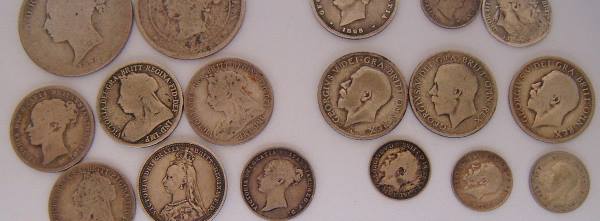Australians greeted Federation with a mixture of solemnity and frivolity. In the days leading up to Commonwealth Day, 1 January 1901, tens of thousands of people from across New South Wales packed their bags and boarded trains, boats and buggies bound for Sydney to enjoy the week of Federation festivities. There they lined the streets and milled in the parks to see parades, illuminations and displays. Some adorned themselves in the national colours with white hats ‘cleverly trimmed up with red, blue and white flowers’, and blue and white striped shirts finished off with red ties.1 Thousands watched the inauguration ceremony in Centennial Park.
Those who stayed behind also celebrated. In the northern town of Glen Innes, for instance, a divine service was held in the Town Hall followed by a tableau – a dramatic arrangement of performers simulating a picture or scene – of Britannia and the Commonwealth. Further south in the small settlement of Middle Arm, near Goulburn, a picnic area was decorated with flags and arches. There ‘young ladies’ provided a luncheon and helped organise a sports program which included the ‘Commonwealth Handicap’ – a 150 yard dash with 1 pounds for the winner. In true imperial spirit, the highlight of the day was the attempted decapitation of an effigy of Boer leader, Paul Kruger. Blindfolded competitors were spun around six times before swinging at the figure with a sword. Kruger appears to have escaped largely unharmed. But a ‘most joyous’ time was had by all and the day was concluded with a 100-voice rendition of Auld Lang Syne.
At nearby Wollogorang station, Margaret Chisolm had also prepared to partake of the Federation spirit. She made, or possibly commissioned, a remarkable dress to wear to a Federation function. Whether this event was held in the local area or ‘up in Sydney’ is uncertain. It is quite likely that the Chisolms, like many other wealthy graziers, travelled to Sydney to take part in the many gala occasions that marked Federation week there. Margaret’s husband Harry, for one, was a frequent city visitor, for he kept racehorses at Randwick. And a hand-coloured photograph of Margaret in the dress, taken at Falk Studios in George Street, indicates that she wore the dress in Sydney on at least one occasion.
Many examples of Federation programs, souvenirs and medals still survive in public and private collections. However, Mrs Chisolm’s dress and photograph, with their assemblage of national and personal symbols, are rare material evidence of the popular celebration of Australia’s Federation and also say much about the owner and her social milieu.
The dress is made from silk satin and cotton. Its bodice depicts the Union Jack, which would serve as the national flag for several years until the adoption of the blue ensign in 1903. The skirt features a hand-painted unofficial coat of arms of the style widely used in New South Wales before Federation. A guardant, or away-facing, kangaroo and emu stand aside a shield upon which is an azure cross with five heraldic mullets, or stars, suggesting the Southern Cross which had featured on many colonial flags since the middle of the century.
Elements of this have remained in the Commonwealth and State coats of arms, the kangaroo and emu supporters having been incorporated into the Australian coat of arms granted in 1908. Accompanying these natural symbols of place are the four dominant emblems of economic prosperity – a sheep, a trade ship, miners’ tools and sheath of wheat. A rising sun, symbolising newness and potential, forms the crest, while below the term ‘Advance Australia’ suggests a sense of incipient ‘national’ identity. A sash declaring ‘Federation’ completes the outfit. A second set of puff sleeves accompanied the dress. The photograph indicates that these were the original sleeves.
It is also apparent that Mrs Chisolm accessorised her costume with a stockwhip and a small flag in her hair. She might have been presenting herself as the spirit of federated Australia – a feminised allegory of nationhood so typical of the period. For like Britannia and the French Marianne, Australia was frequently represented as a woman in Federation illustrations and decorations. (This symbolism was somewhat ironic given that Australian women were only granted the right to vote in federal elections in 1902). The addition of a stockwhip may also have been an allusion to her own role as the mistress of a large sheep, cattle and horse property. The small Federation flag was typical of those used by groups such as the Australasian Federation League to promote Federation. Based upon the New South Wales ensign of the 1830s, this flag flew alongside the Union Jack at many Federation functions.
Mrs Chisolm probably wore this costume in a Federation tableau or at a fancy dress function. It is unlikely that the dress was intended for use at any of the parades and elegant Federation soirees. It was at these events that the wives and daughters of the rich and powerful gathered to establish or cement social networks. Here status could be affirmed or belied by the choice of a fabric or hat. Consequently drapers and milliners used the bout of ‘Commonwealth festivities’ to advertise their latest fashions, while fashion advice abounded in newspaper social columns and women’s pages. Writing in the Town and Country Journal of 5 January 1901, ‘Euphrosyne’ suggested that commissioning a ‘Commonwealth reception gown’ along the lines of a French ‘costume de fete’ was certain to give the right impression of grace and ‘chic’. For the Sydney Mail’s social columnist, ‘Winifred’, there was little room for sartorial frivolity. In fashionable Macquarie Street on the day of the Commonwealth parade, a ‘recognised society leader’ looked appropriately smart in black voile, white muslin and lace. However the ‘brave woman’ whose ‘vice-regal patriotism carried her to such lengths’ that she adorned her hat with cornflowers in the colours of Lord Hopetoun, attracted little ‘admiration’.3 There was a time and a place for everything it seems.


